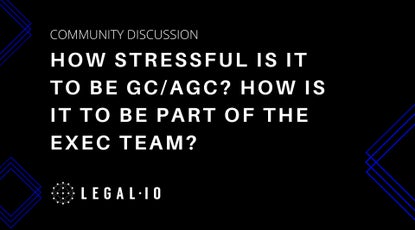In his book "Never Split the Difference: Negotiating As If Your Life Depended On It", Chris Voss, renowned negotiator and expert in the art of deal-making, unravels top tips and tricks that have earned him a reputation as one of the most skilled negotiators in the business. From harnessing the illusion of control to employing tactical empathy, Voss's strategies go beyond conventional approaches, transforming confrontations into fruitful collaborations. Whether you're a seasoned negotiator or just starting, prepare to enhance your negotiation skills with these tips:
Label important emotions with these starting words:
- “It seems like ...”
- “It sounds like ...”
- “It looks like ...”
Avoid “I” statements and use the neutral phrasing above instead.
Use softening words & phrases to turn possible confrontations into collaborations/joint problem-solving:
- “Perhaps”
- “Maybe”
- “I think”
- “It seems”
Defuse confrontation in 4 simple steps:
Use the late-night FM DJ voice
-
Start with “I’m sorry ...”
-
Mirror. Repeat the last 3 words or critical 1-3 words of what was said.
-
Stay silent for at least 4 seconds to let the mirror work its magic.
-
Repeat
Slow. It. Down. Going too fast is one of the most common negotiating mistakes.
Put a smile on your face. Positivity works!
“He who has learned to disagree without being disagreeable has discovered the most valuable secret of negotiation.” - Robert Easterbrook, former Washington Post editor
Don’t feel their pain: Label it. Labeling is a way of validating someone’s emotion by acknowledging it. Give their emotion a name to show you identify with how they feel.
Do an “accusation audit.” List the worst thing your counterpart could say about you and say them before the other person can.
Employ tactical empathy. Imagine yourself in your counterpart’s situation. You don’t have to agree with them or give them a hug. Empathy is not sympathy.
Break the habit of attempting to get people to say “yes.” The word makes people defensive.
There are three types of “yes”:
- Counterfeit (designed to make you go away)
- Confirmation (innocent, reflexive, black & white)
- Commitment (the real deal, leads to action)
Getting to “no” is more important in a negotiation.
“No” is not the end of the conversation but the beginning. Every “no” gets you closer to a real “yes.”
A “no” can have several meanings:
- “Wait”
- “I’m not comfortable with that”
- “I am not yet ready to agree”
- “You are making me feel uncomfortable”
- “I do not understand”
- “I don’t think I can afford it”
- “I want something else”
- “I need more information”
- “I want to talk it over with someone else”
“No” makes the speaker feel safe, secure and in control, so trigger it.
Ask solution-based questions to counter a “no.”
- “What about this doesn’t work for you?”
- “What would you need to make it work?”
- “It seems like there’s something here that bothers you.”
What if they won’t say “no”? Then you intentionally mislabel to force it.
e.g. “It seems like you no longer want this project to succeed.”
How can you say “no” in a non-confrontational way and get them to negotiate against themselves? Use the multi-step no:
- “How am I supposed to do that?”
- “Your offer is very generous. I’m sorry, that just doesn’t work for me."
- “I’m sorry, but I’m afraid I just can’t do that.”
- “I’m sorry, no.”
- “No.” (polite, downward inflection)
Strive for “that’s right” instead of “yes.” Use a summary/paraphrase to trigger it.
When you get a “yes,” use the Rule of Three. Make them say it three times in different ways to ensure it isn’t counterfeit.
“Yes” is nothing with “how.”
Getting ignored? Use the phrase: “Have you given up on this project?”
Strive to create “unconditional positive regard.”
The negotiating F bomb is “FAIR.” It is a very powerful word used three different ways.
Use #1: “We just want what’s fair.”
Counter: “OK, I apologize. Let’s stop and go back to where you think I started treating you unfairly, and we’ll fix it.”
Use #2: “We’ve given you a fair offer.”
Counter: (mirror) “Fair? (pause) It seems like you’re ready to provide the data to support that.”
Use #3: To defuse the F bomb in advance.
Example: “I want you to feel like you’re being treated fairly at all times. Let me know if at any time you feel I am treating you unfairly.”
Deadline pressure and fear of loss are powerful negotiating tools.
You can bend reality by anchoring a starting point.
Use a range to soften an extreme anchor, but be sure to make the lower bound more than you want. (People often pick the lower bound when given a range in a negoitiation.)
To ease a conversation in the direction you want, use calibrated questions. They make your counterpart feel in charge while it’s you framing the conversation.
Calibrated questions:
- Avoid close-ended question words such as “can,” “is,” “are,” “do” and “does” that can be answered with a yes/no
- Start with one of the journalists’ 5 Ws, which form open-ended questions that inspire thinking
- Best of these is “what” or “how”
- “Who,” “when” and “where” invite unthinking factual replies
- Be careful with “why” as it is always an accusation, in any language
A good use of “why” — when the defensiveness it creates supports the change you want them to see
e.g. “Why would your company ever change from your long-standing vendor and choose our company?” (in a respectful, polite tone)
Some useful calibrated questions:
- “What is the biggest challenge you face?”
- “What about this is important to you?”
- “How can I help make this better for us?”
- “How would you like me to proceed?”
- “What is it that brought us into this situation?”
- “How can we solve this problem?”
- “What’s the objective? What are we trying to accomplish here?”
And the mother of all calibrated questions: “How am I supposed to do that?”
Be aware of behind-the-scenes deal killers, people you are not negotiating with who, nevertheless, have the ability to kill your deal.
Ask calibrated questions to reveal these hidden deal killers:
- “How does this affect everybody else?”
- “How on board is the rest of your team?”
- “How do we make sure we deliver the right material to the right people?”
- “How do we ensure the managers of those we’re training are fully on board?”
Read people using the 7-38-55 Rule:
- 7% is what people say
- 38% is their tone of voice
- 55% is their body language
Pay special attention during unguarded moments: before & after formal meetings or during breaks, at events, etc.
“Ten minutes of face time often reveals more than days of research.” - Chris Voss
A person’s use of pronouns is telling:
-
“I,” “me,” and “my” means the real power to decide probably lies elsewhere.
-
“We,” “they,” and “them” means it’s more likely you’re dealing directly with a savvy decision maker keeping his options open.
Black Swans are the hidden motivators in a negotiation. They are “unknown unknowns.” Voss believes there are as many as three of them in any negotiation.
“Finding and acting on Black Swans .... takes negotiation from being a one-dimensional move-countermove game of checkers to a three-dimensional game that’s more emotional, adaptive, intuitive — and truly effective.” - Chris Voss
Negotiation is more like walking on a tightrope than competing against an opponent. Focusing so much on the end objective will only distract you from the next step, and that can cause you to fall off the rope. Concentrate on the next step because the rope will lead you to the end as long as all the steps are completed
Leverage is about perception, not reality. It is an essentially emotional concept. It can be manufactured where it doesn’t exist.
It doesn’t matter what leverage actually exists, what matters is the leverage they think you have.
“Think of leverage as as a fluid that sloshes between the parties. As a negotiator you should always be aware of which side, at any given moment, feels they have the most to lose if negotiations collapse.” - Chris Voss
The Ackerman method is an offer-counteroffer model that is the most effective way to haggle:
- Set your target price (your goal).
- Set your first offer at 65 percent of your target.
- Calculate three raises of decreasing increments (to 85, 95, and 100 percent).
- Use lots of empathy and different ways of saying “No” to get the other side to counter before you increase your offer.
- When calculating the final amount, use precise, non-round numbers like, say, $37,893 rather than $38,000. It gives the number credibility and weight.
- On your final number, throw in a non monetary item (that they probably don’t want) to show you’re at your limit.
Have the courage to keep negotiating. Don’t accept a wimp-win deal where you jump a counterpart’s first concession.
There are three types of leverage:
- Positive
- Negative
- Normative
Positive leverage is your ability to give your counterpart what he wants. Whenever the other side says, “I want ...” you have positive leverage.
Negative leverage is the ability to hurt your counterpart. It is based on threats. It gets people’s attention because of the psychology of loss aversion.
Normative leverage is using your counterpart’s norms (rules of behavior, moral standards) to bring them around. If you can show inconsistencies between their beliefs and their actions, you have leverage. No one likes to look like a hypocrite.
This includes working to understand the other side’s religion, meant literally (e.g. Jewish) or figuratively (their worldview).
Review everything you hear from your counterpart. You will not hear everything the first time, so double-check. Compare notes. Use “backup listeners” whose only job is to hear things you miss.
Is your counterpart acting crazy? Here are three possible reasons why:
- They are ill-informed. When people have bad information, they make bad choices. Garbage in, garbage out.
- They are constrained. They may lack the power to close the deal.
- They have other interests. The old “hidden agenda.”
Do a preparatory exercise before entering a negotiation where you list the primary tools you anticipate using, such as the labels, calibrated questions, etc.
“When the pressure is on, you don’t rise to the occasion. You fall to your highest level of preparation.”










